I am glad that I paid so little attention to good advice; had I abided by it I might have been saved from some of my most valuable mistakes. – Edna St. Vincent Millay
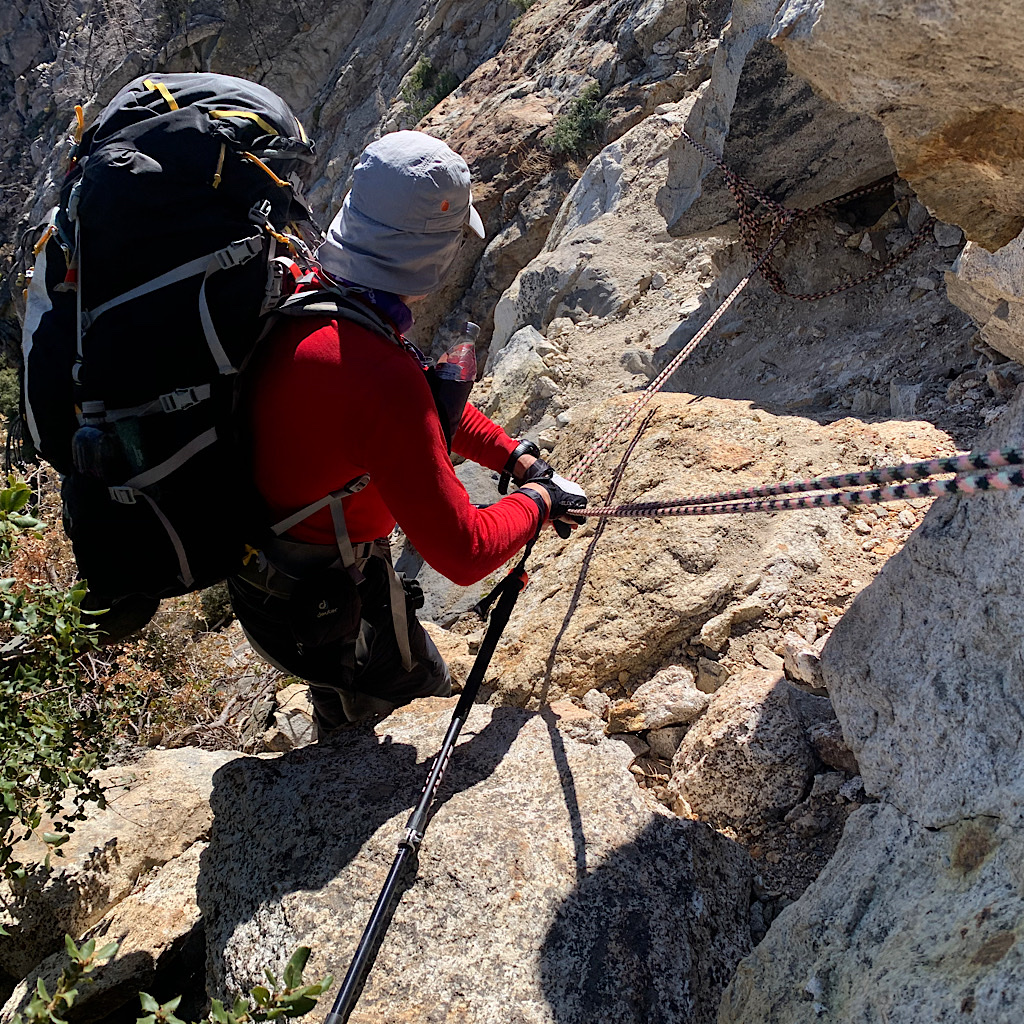
I set my alarm a bit too early this morning thinking I’d need more time to organize since going back after a ‘zero’ day is always a bit of a shock. I fill the time eating too much yogurt and granola and reading the Times. An article grabs my interest as I wait outside under a sky just beginning to lighten for handyman Dean to take us back to the trailhead. It’s about grieving and highlights a book by David Kessler where he takes the five stages – denial, anger, bargaining, depression and acceptance – and adds one more, meaning. “Loss is simply what happens to you in life. Meaning is what you make happen,” he writes, offering something hopeful, optimistic and, most important to me, active to the peace and groundedness of acceptance.
Dean arrives right on time and we pile our bags in the bed of his truck and head up to Humber Park. I think about the kind of meaning I’ll create out of the ashes of my loss, and decide, as Ted and I retrace our steps up to the saddle, that my experience will be meaningful and I will carry it with grace and dignity. It’s fitting to consider these things here as I walk up what I just came down, as though offered a kind of do-over and a chance to gain a new perspective.
Ted leads and powers up even with a full resupply. Taquitz – pronounced tah-quits or tah-keets, take your pick – looms over us, seemingly inviting me to come climb him. Giant firs hold their enormous cones at the tip of the boughs like poorly placed oversized Christmas decorations. Several dead trunks stand as beheaded sentinels, their bark stripped revealing a twist underneath from root to crown. Birds sing good morning and we’re at our junction before we know it.
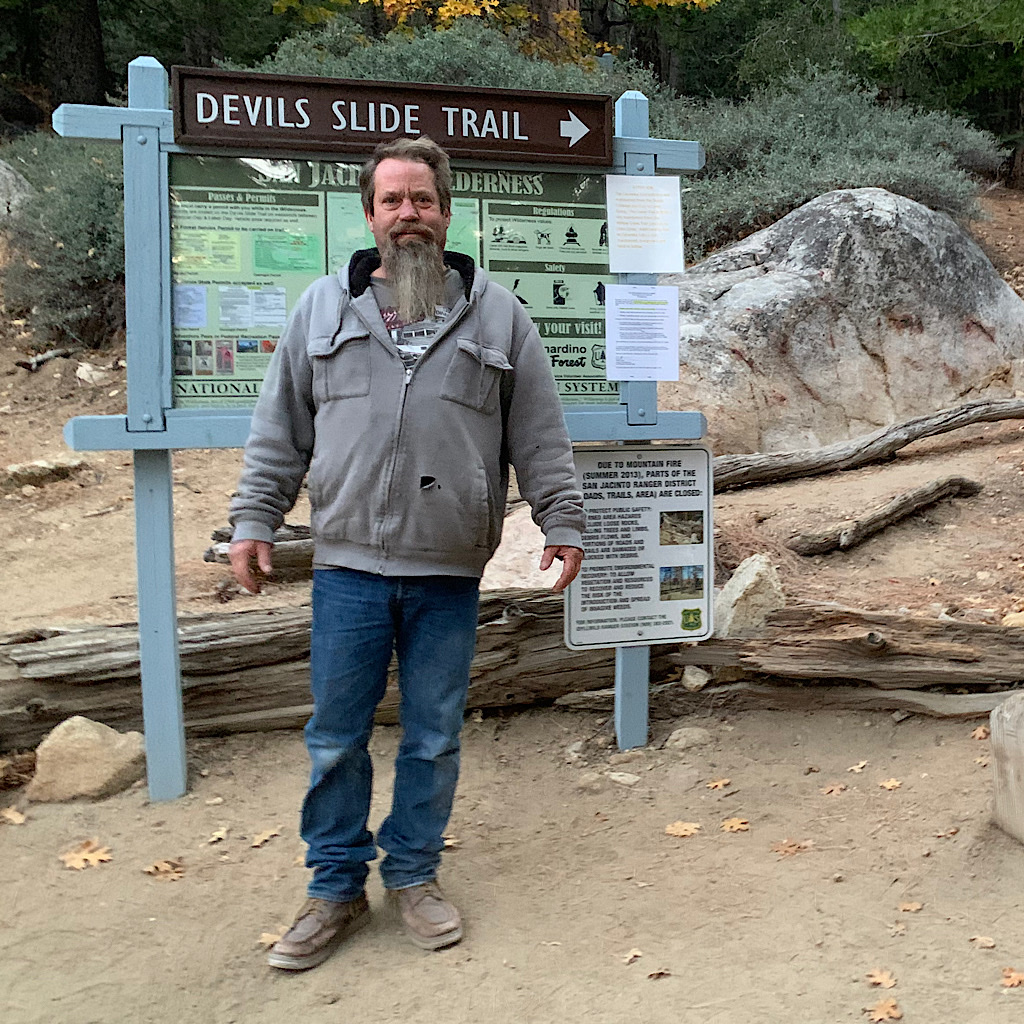
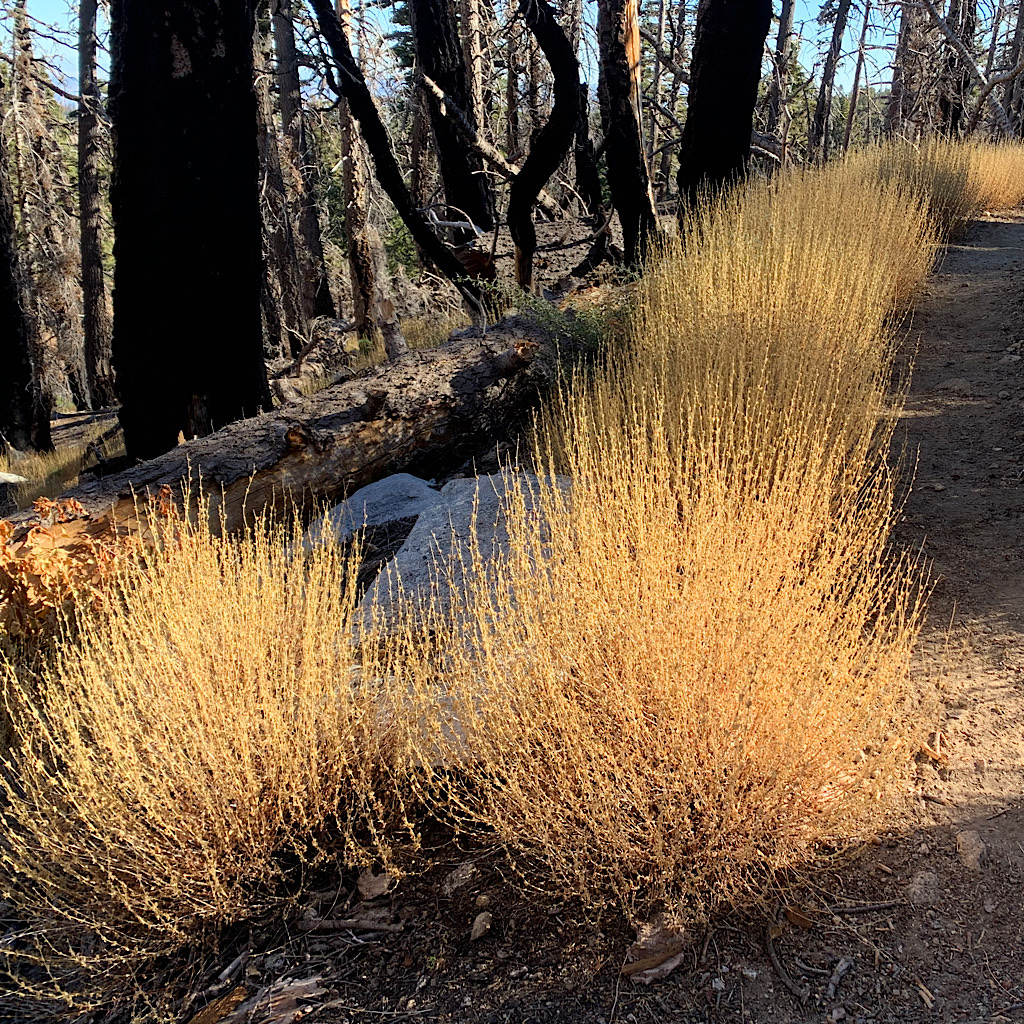
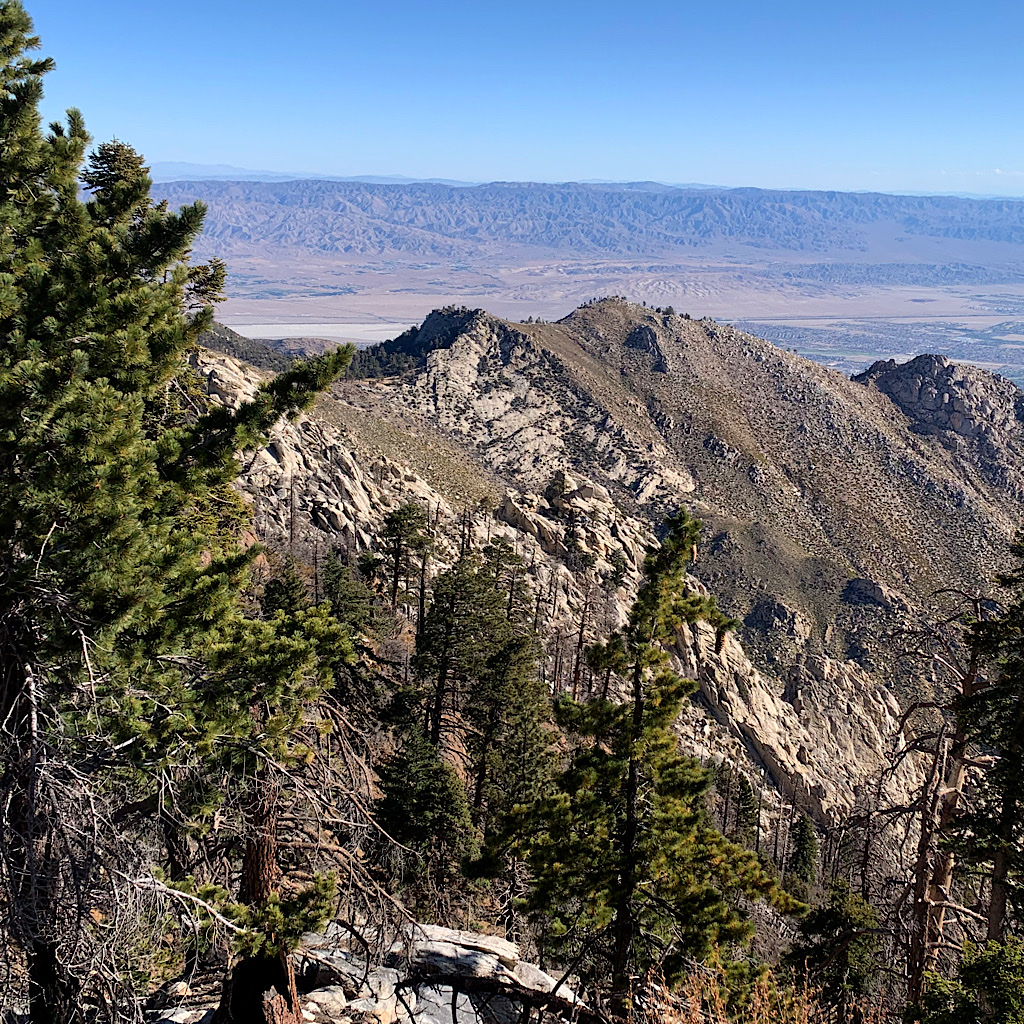
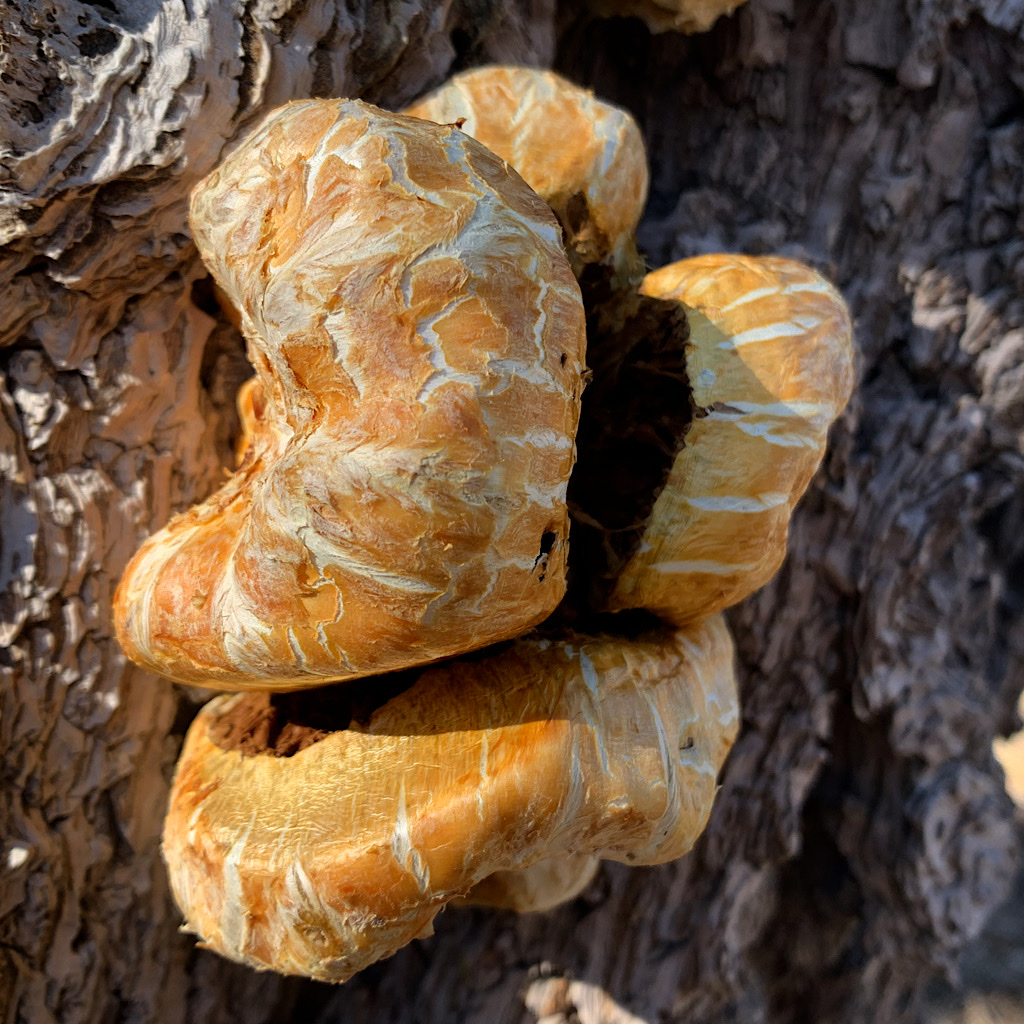
The day hiker we met at the summit of San Jacinto peak passes us with a bouncy dog, flying up the trail on springs. We take a shortcut alternative that brings us to our last water for over fifteen miles. The sun has yet to reach here and I freeze my fingers filling two liters. We move fast uphill and into the sun as I shiver, holding my sticks under my arms so I can rub my hands together. Views open out to the desert, the cities in grids fitting neatly between our mountain range and the far one. Fire swept through here recently, charred trunks frame the view and scrubby bushes take advantage of the open sky.
The trail is narrow, sometimes carved right out of the mountainside. I feel high and exposed, like I have wings. Mountains march below me towards the flats. It’s steep and I’m aware I could fall, but I feel solid up here. The wind makes a whistling sound through my hair. Ted and I walk steadily, talking very little now as we anticipate around every corner the big rockslide that blocks the trail, one we’ll need to navigate around. Someone recently placed a safety rope. Without it, the crossing is extremely dangerous, hikers needing to pass their packs around or under the slide, then carefully maneuver around, knowing a slip could prove fatal.
With a rope, this section doable for us, but that doesn’t mean we’re not concerned. Last night we had a heated discussion on how to manage this part. It’s not just this rock hazard, but the long distance between water sources is very awkward to manage. I could have skipped this and met the PCT from another trail, but I stubbornly refused, wanting to walk all of it. Ted supports me completely, but we both know it will be a long day squeezed into less than twelve hours of daylight.
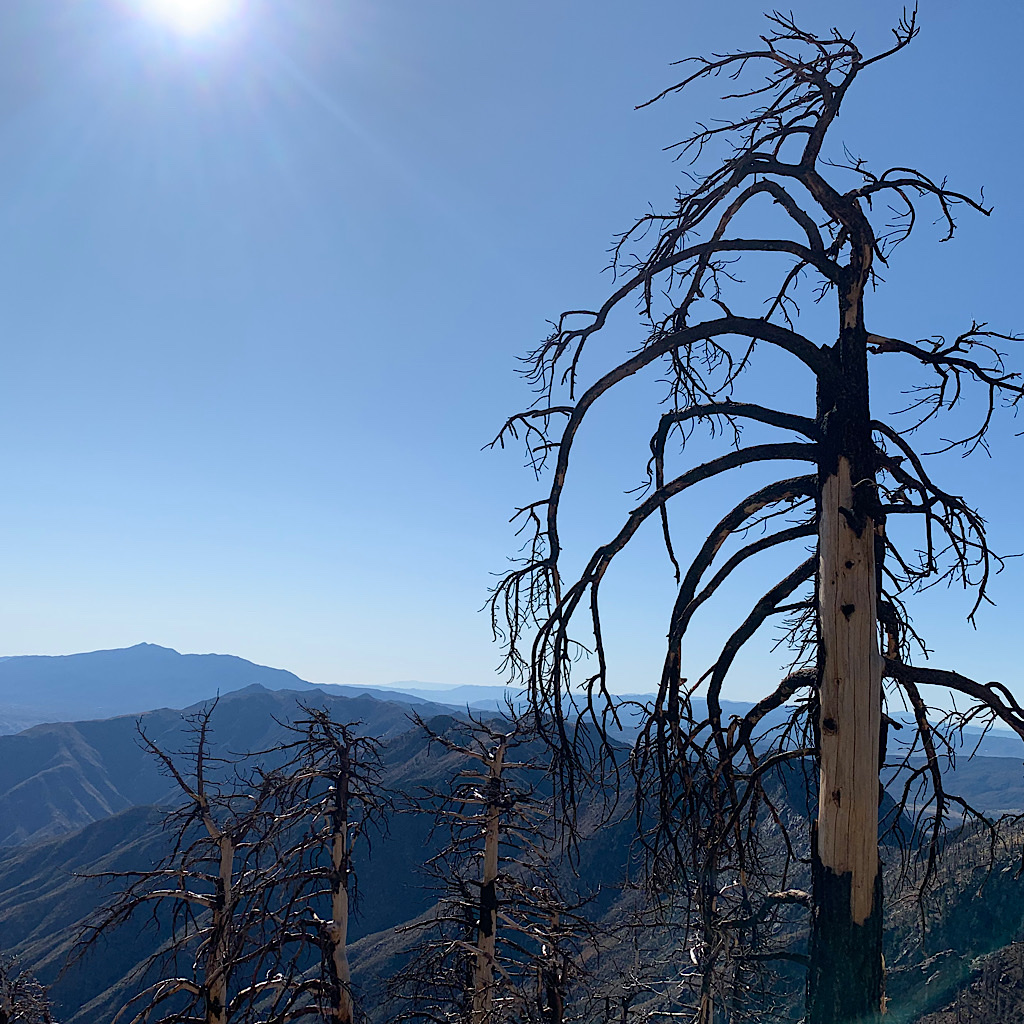
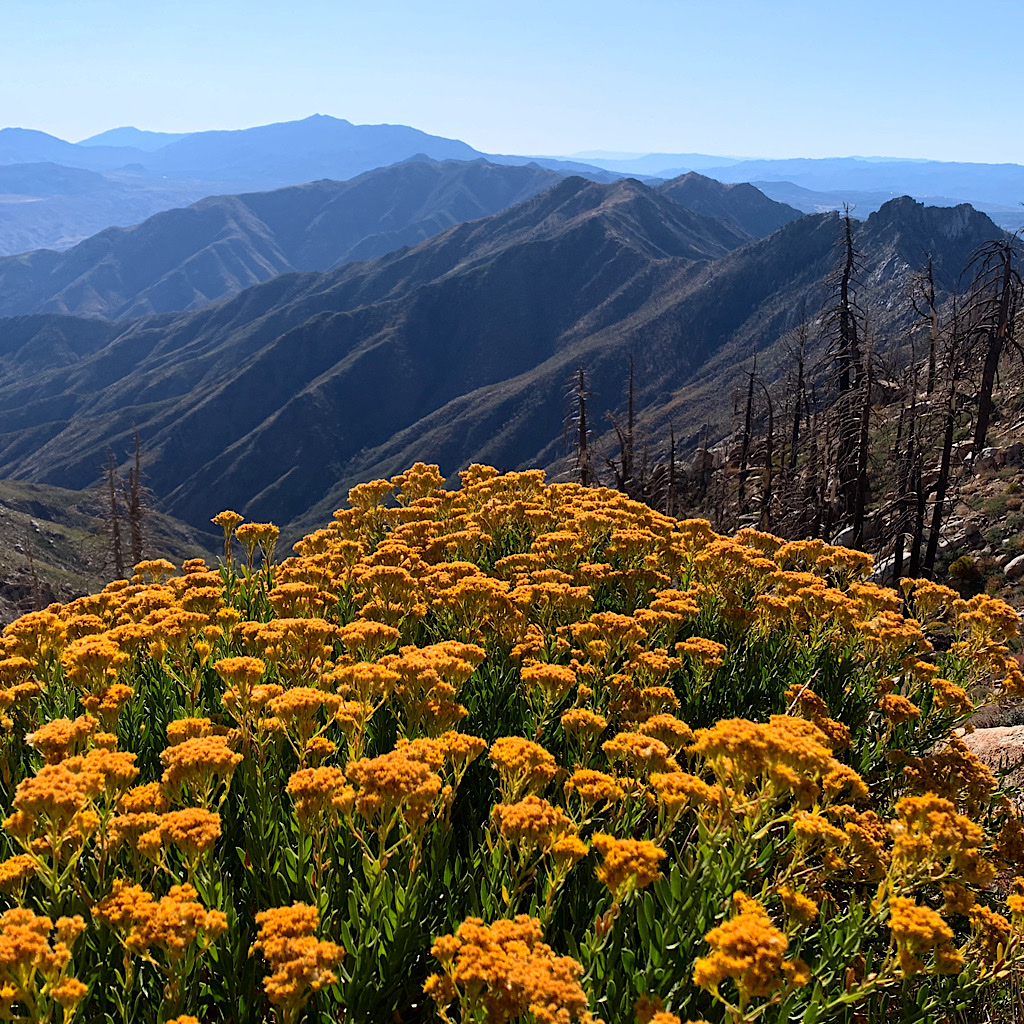
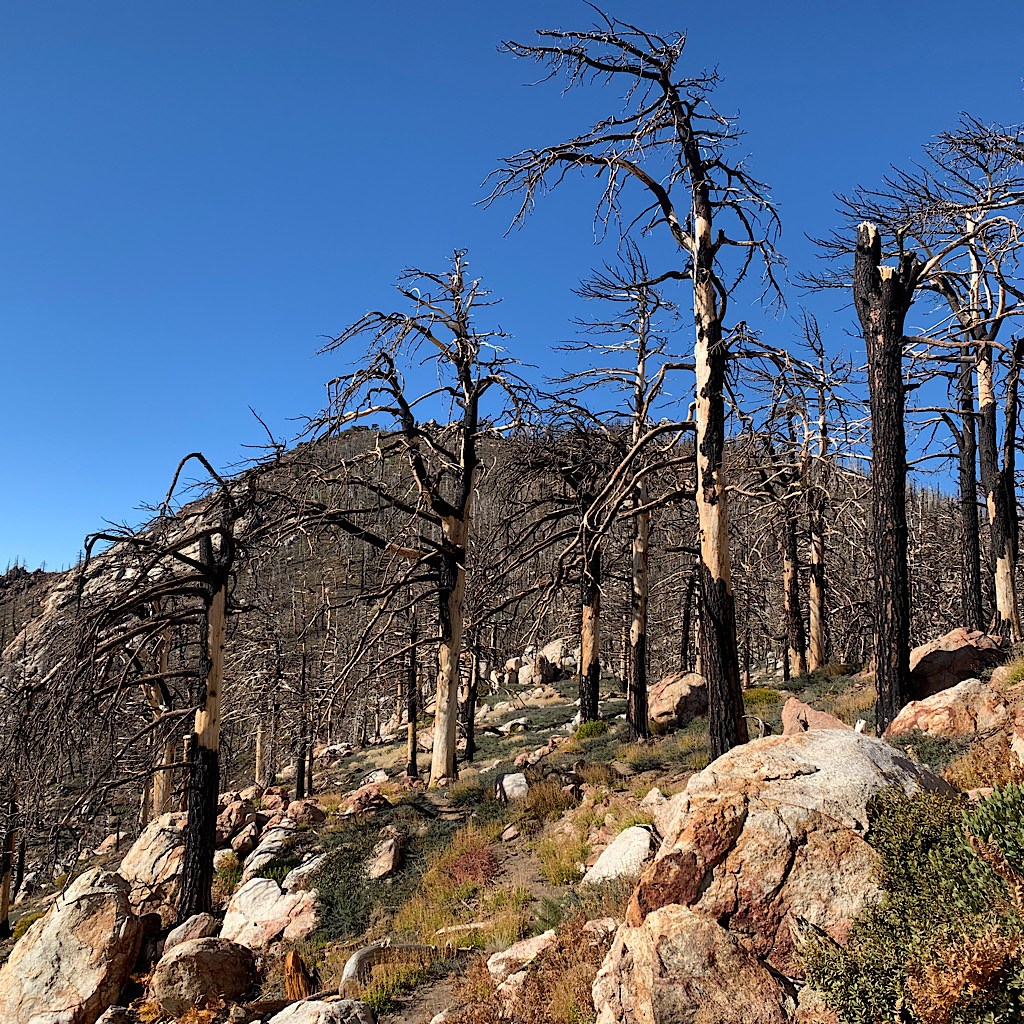
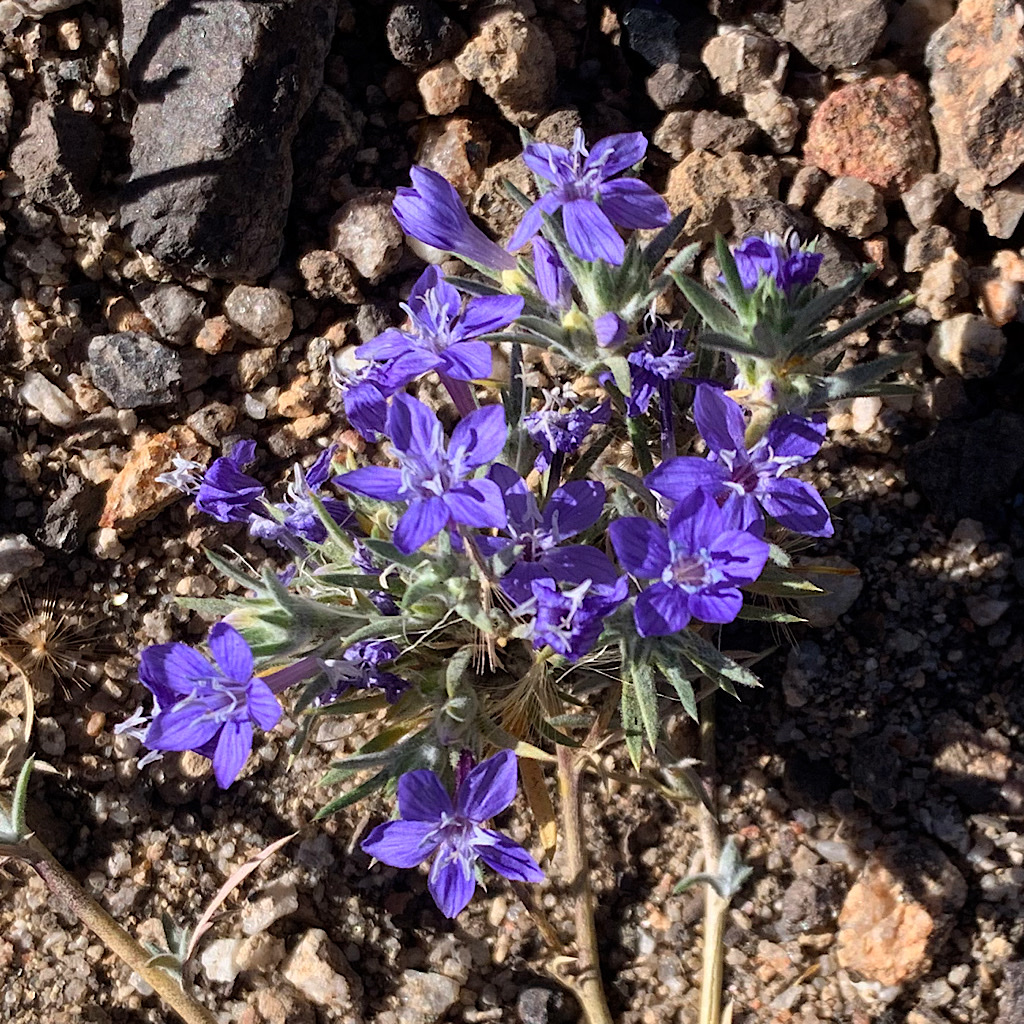
We keep moving silently, up and down switchbacks, sidling along narrow catwalks, weaving through steep outcroppings and trying to stay upright on loose rock. We see the slide at the same moment, boulders trusted to stay put on the edge of a cliff, finally released, landing smack dab in the way. The climbing rope is professionally knotted in place and Ted doesn’t skip a beat, grabbing hold and lowering himself over a smooth boulder onto a narrow ledge. He skirts across and up, disappearing around the largest boulder. After a moment, he tells me he’s safe and it’s my turn. I copy him by leaving my sticks on my wrists and pulling the rope tight before lowering myself to the ledge. One stick snags and I get off-balance as the rope slackens, but I quickly pull it tight and shimmy around the boulder, finally seeing it’s a decent climb back up to the trail.
I’m up and out in no time. We bump knuckles and send a huge thank you to the person who placed the rope, wondering if the next step is a permanent chain. It was fun going around, even if I almost fell off, my heart still racing. I’m so glad we didn’t skip this beautiful section, although I can see how sketchy things would be without that rope and I can only imagine how long it would have taken to pass our backpacks around the slide and crawl over.
We continue walking in the brilliant sunshine, sidling the mountain through dried flowers, then briefly entering forests of pines, three stories tall. We stop for lunch at a shady campsite surrounded by golden oaks. I bought a lot of food for this section and we eat well – salami, sharp cheddar, crackers and jelly beans, all rather sophisticated. We keep walking uphill and Ted asks if this is our final push. Unfortunately, no. It’s the uphill that gets us to the downhill before the final uphill. We walk on the spine of the ridge with desert to our left, pines and granite to out right.
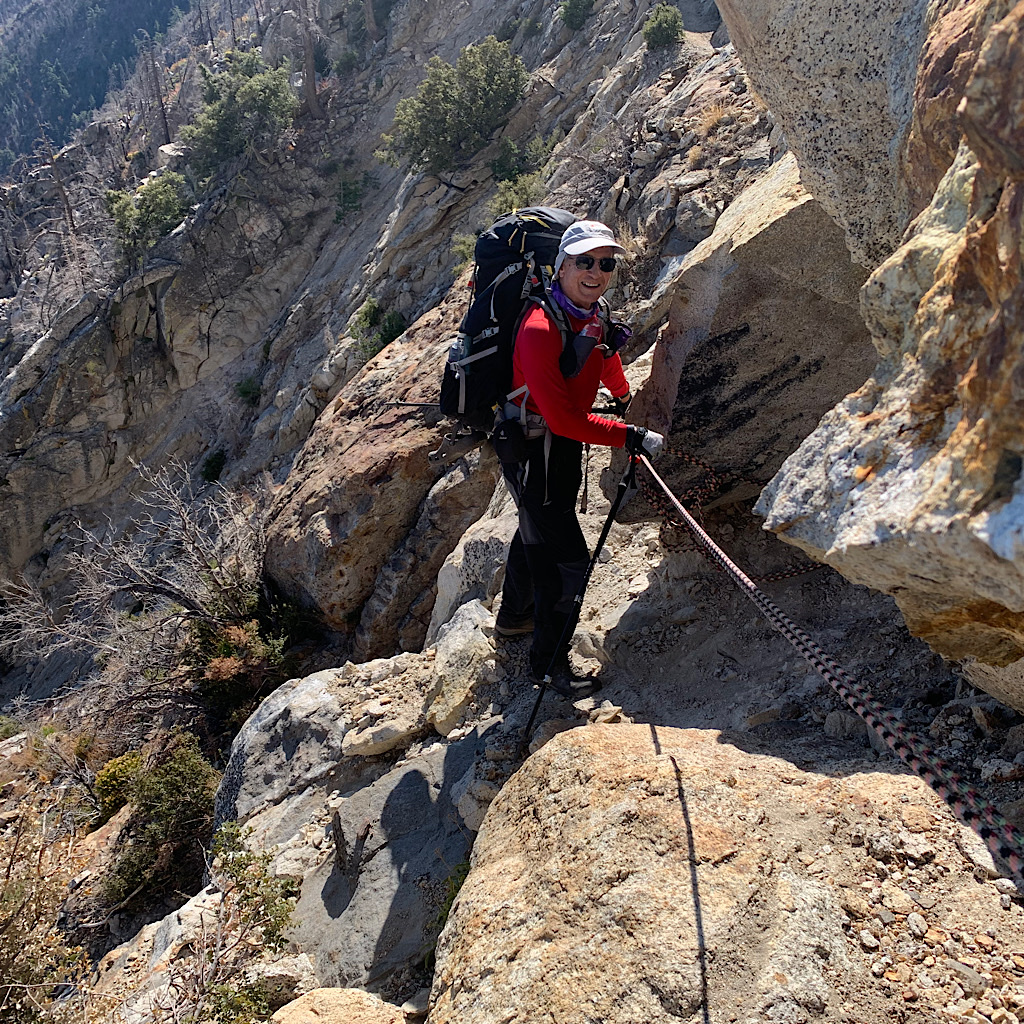
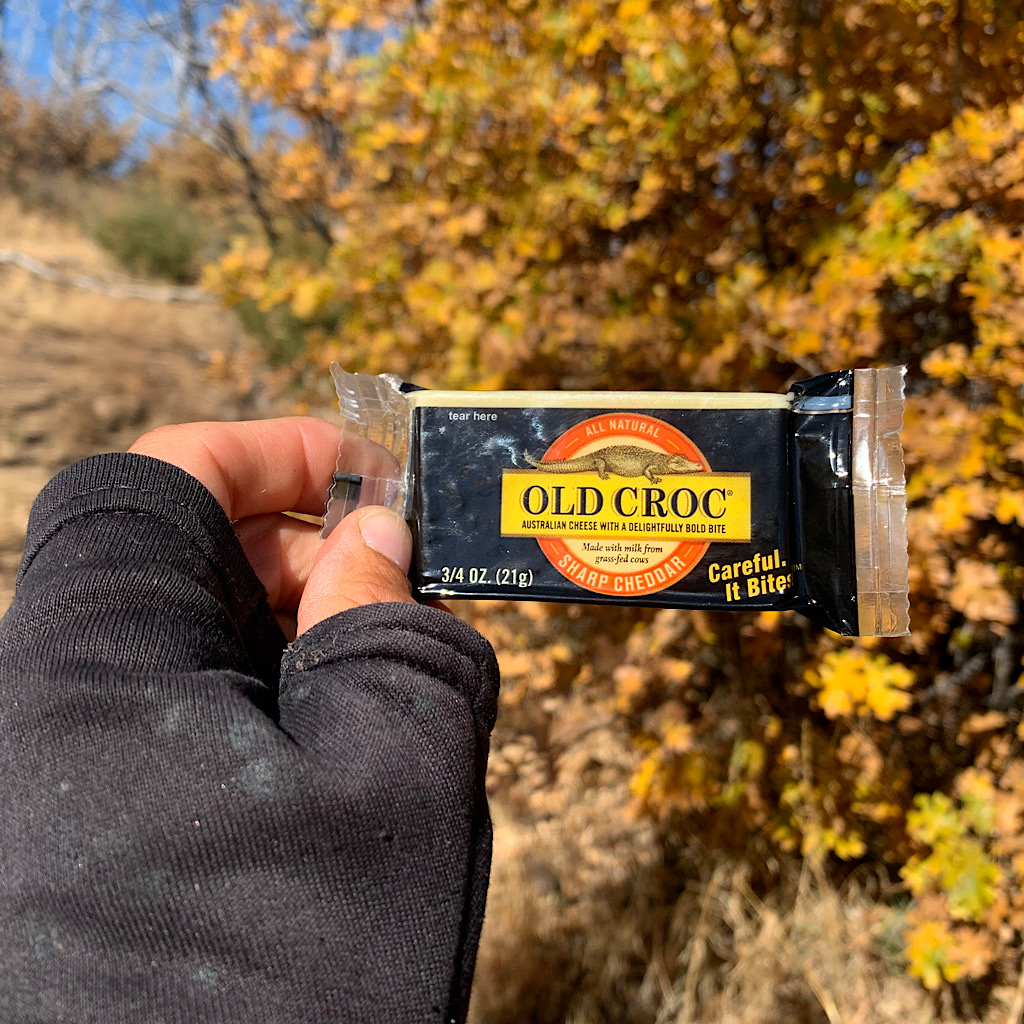
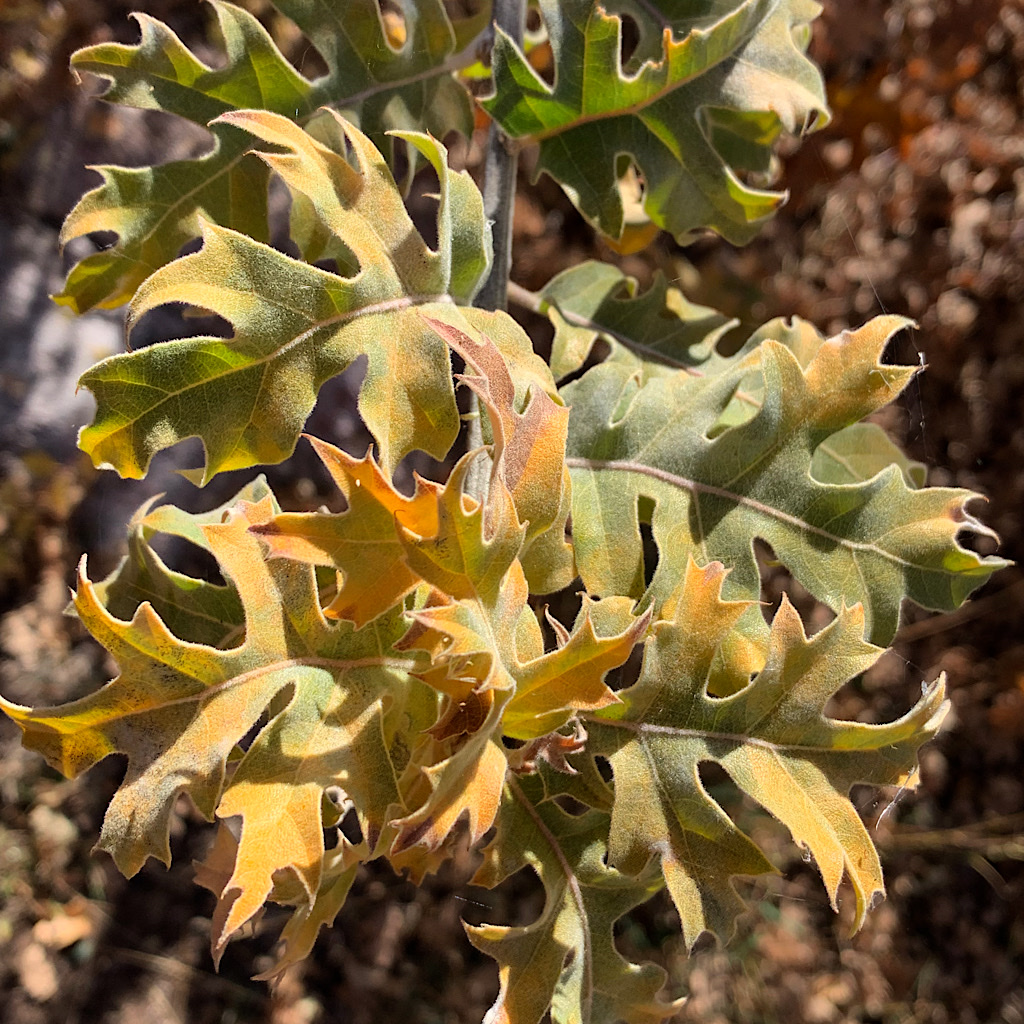
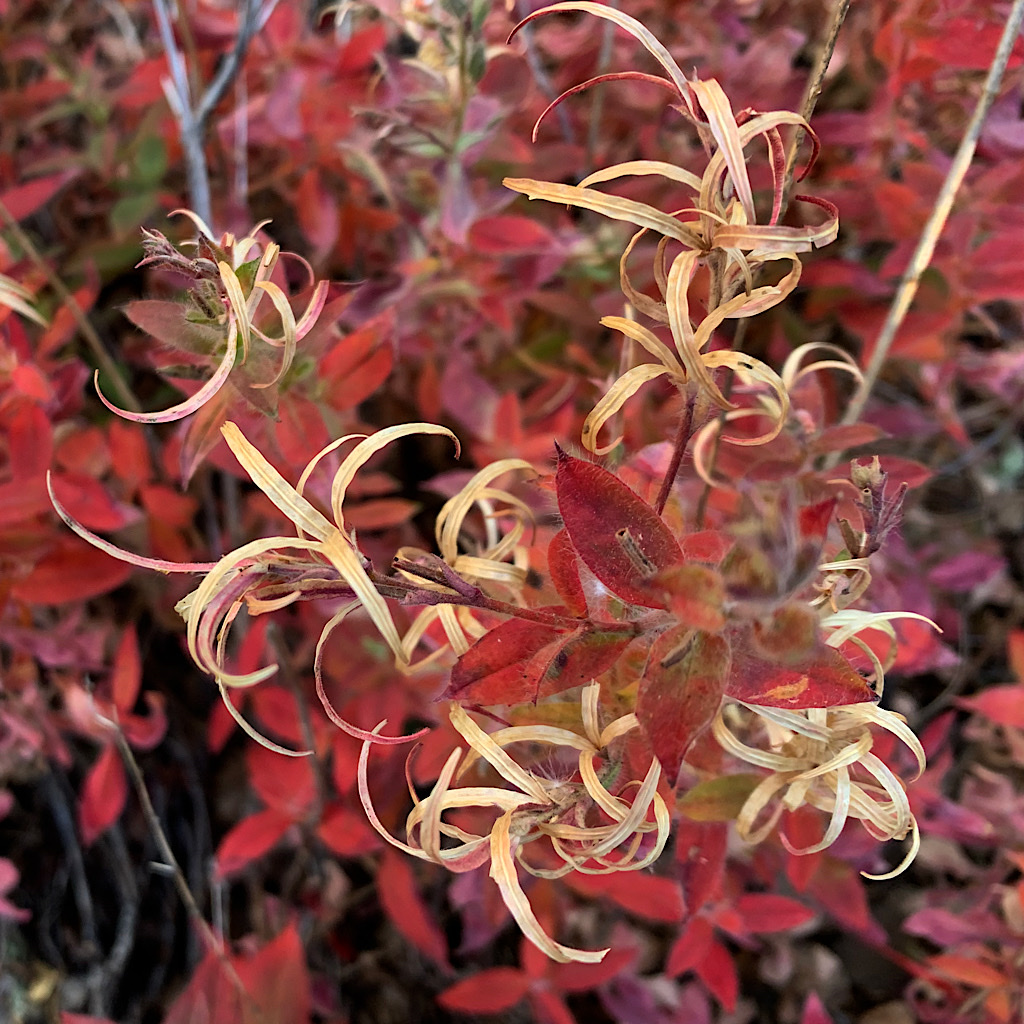
When we do head down, it’s steep and slippery. I can see a ranch below and there’s supposed to be water available, though it seems iffy this time of year, so we pass on by and prepare for a 1,000 foot climb and a few more miles before the turn off to Cedar Spring. It’s a gradual start, overgrown with a wiry plant, its only purpose seemingly to whack hikers as they pass by. At least it has no thorns.
Up and up we climb on tight switchbacks, the mountain of funky boulders appearing to grow in front of us. I continue to be amazed at how high we are above the desert, as though gliding on thermals or resting on a cloud. The top is less strenuous, but not flat. Our heavy breathing is replaced by flutey crickets. Massive clumps of dried flowers look like fuzzy yellow chicks in huge heaps.
I can see a saddle ahead where I suspect the side trail is to the spring. Manzanita carcasses bleached gray appear animated, waving their limbs into the wind. The trail is rocky and hurts my feet, but I move along startled by late afternoon distances managing to feel twice as long. True for the side trail, too, just a mile though the longest, it seems, I’ve ever walked. It takes us down, but also over, the view of animal-skins mountains disappearing into shadow as the sun sets.
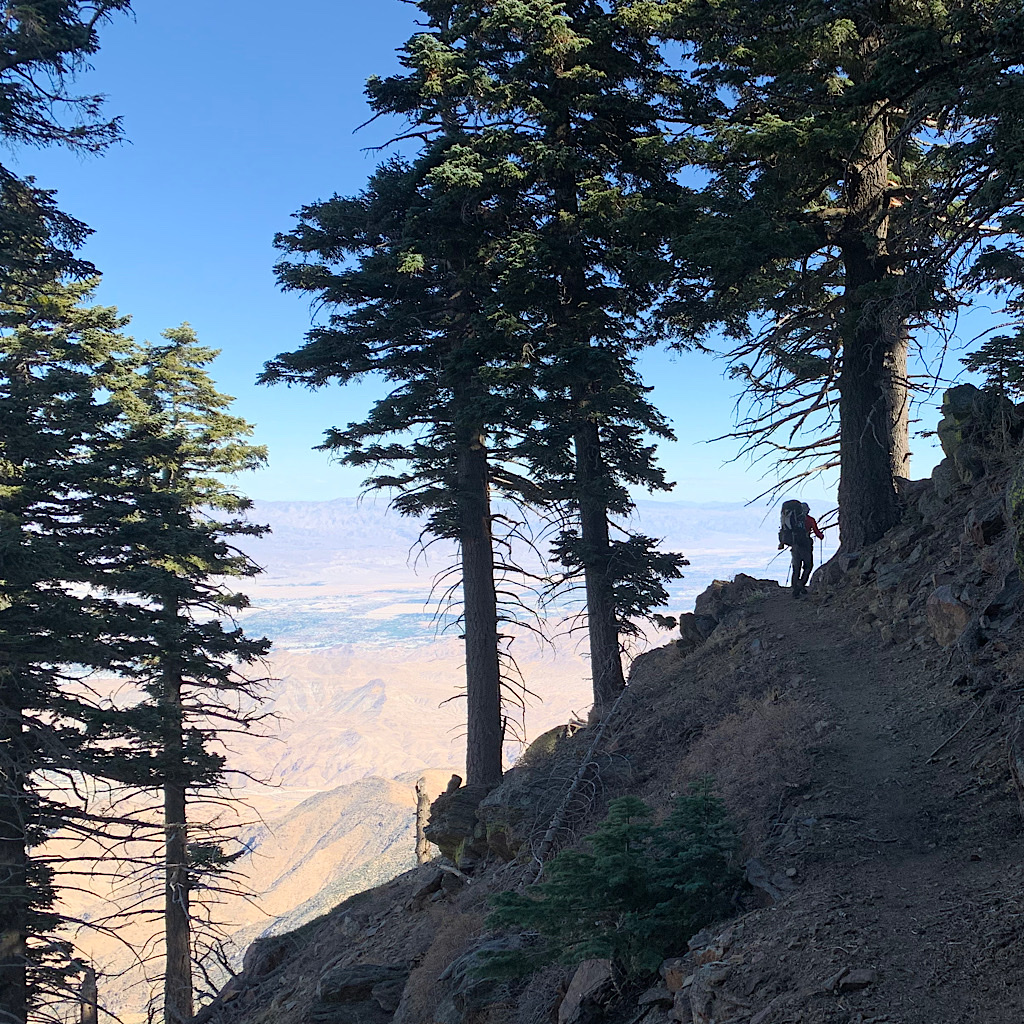
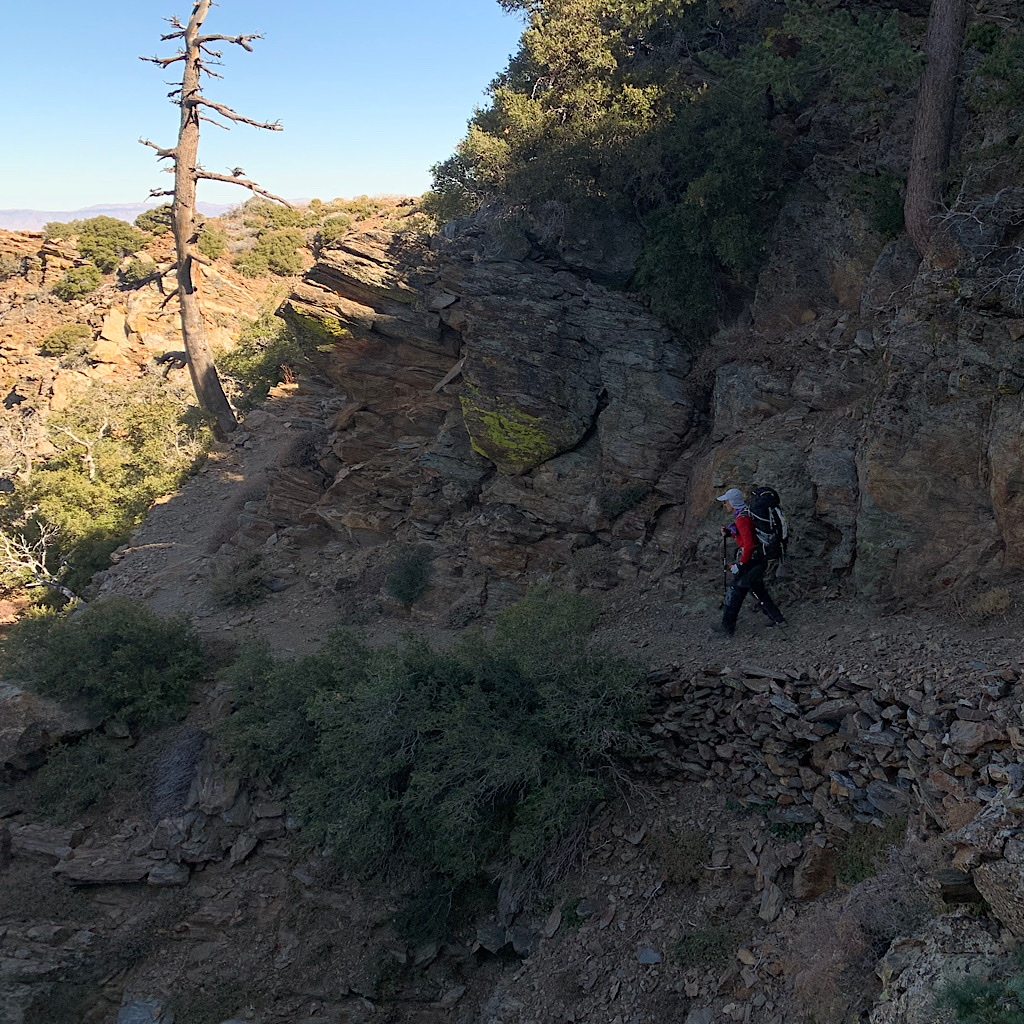
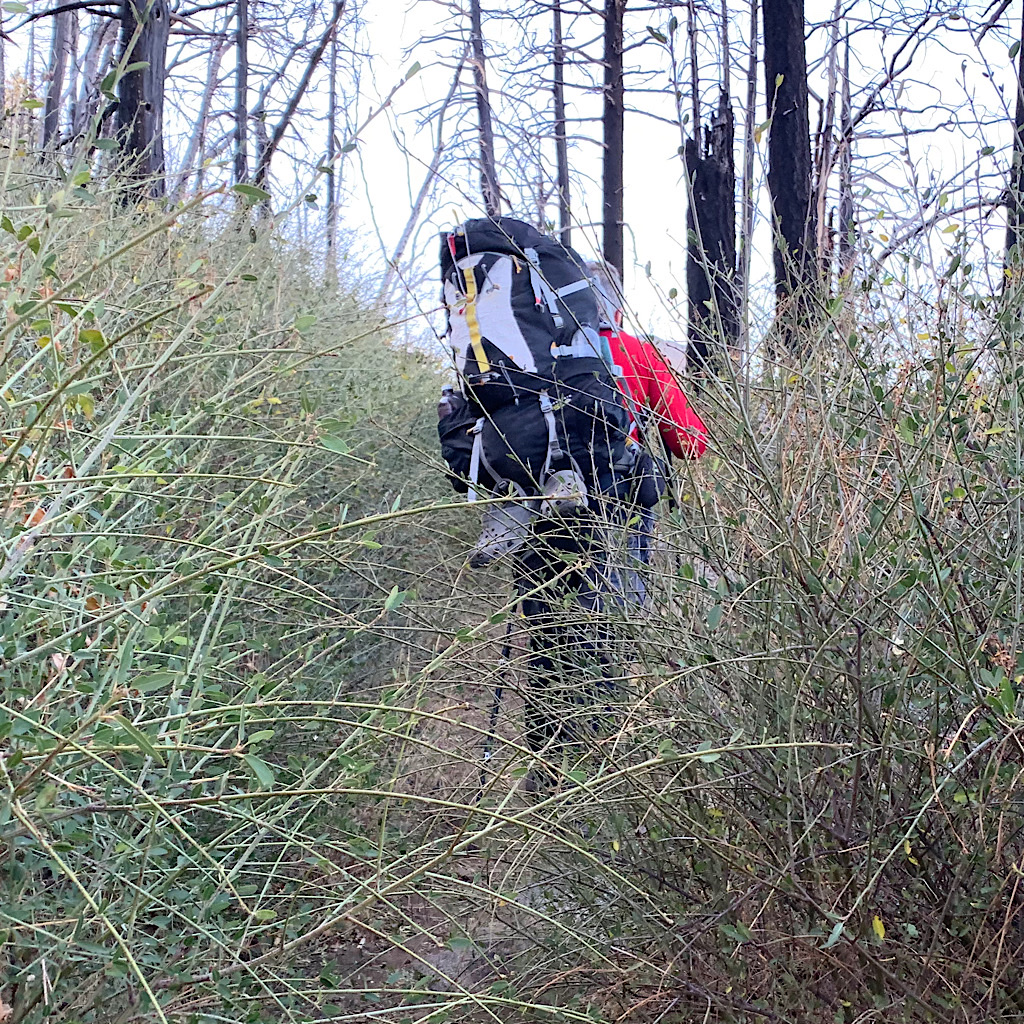
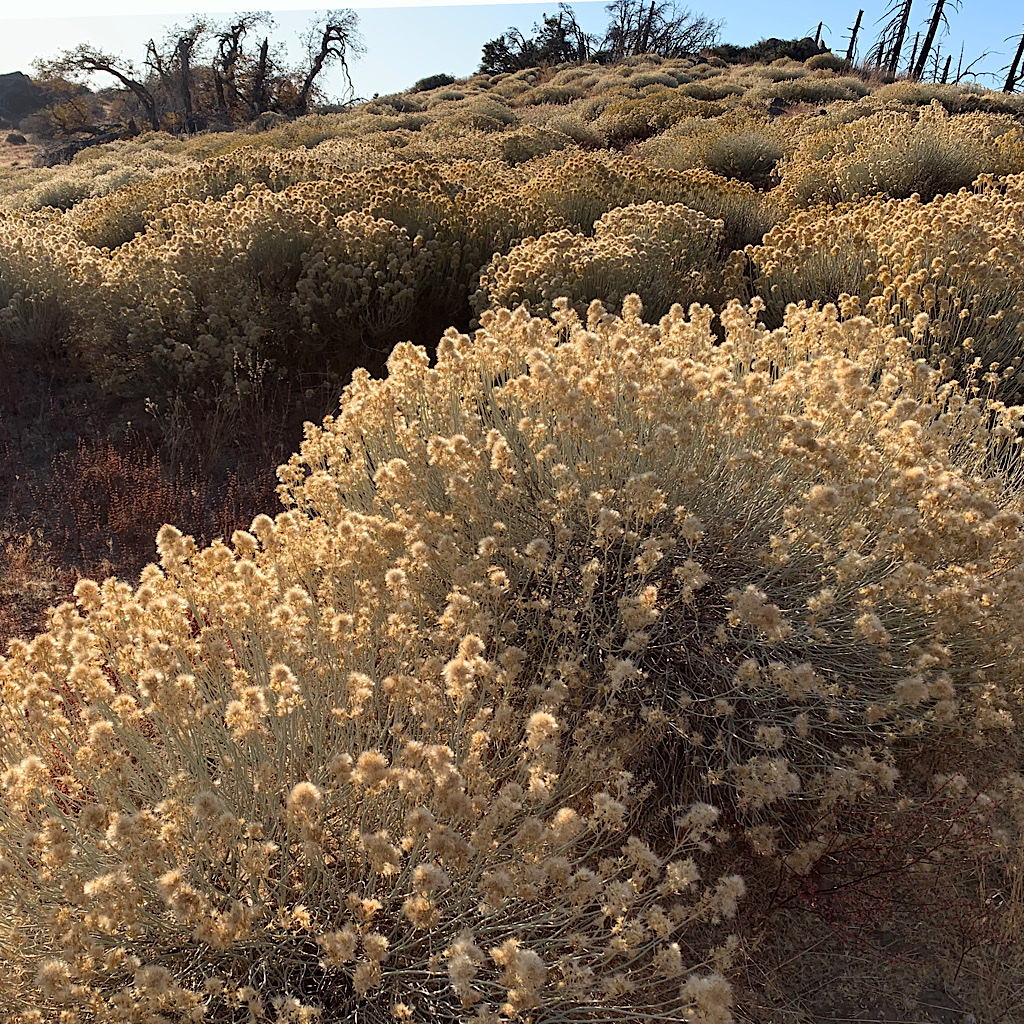
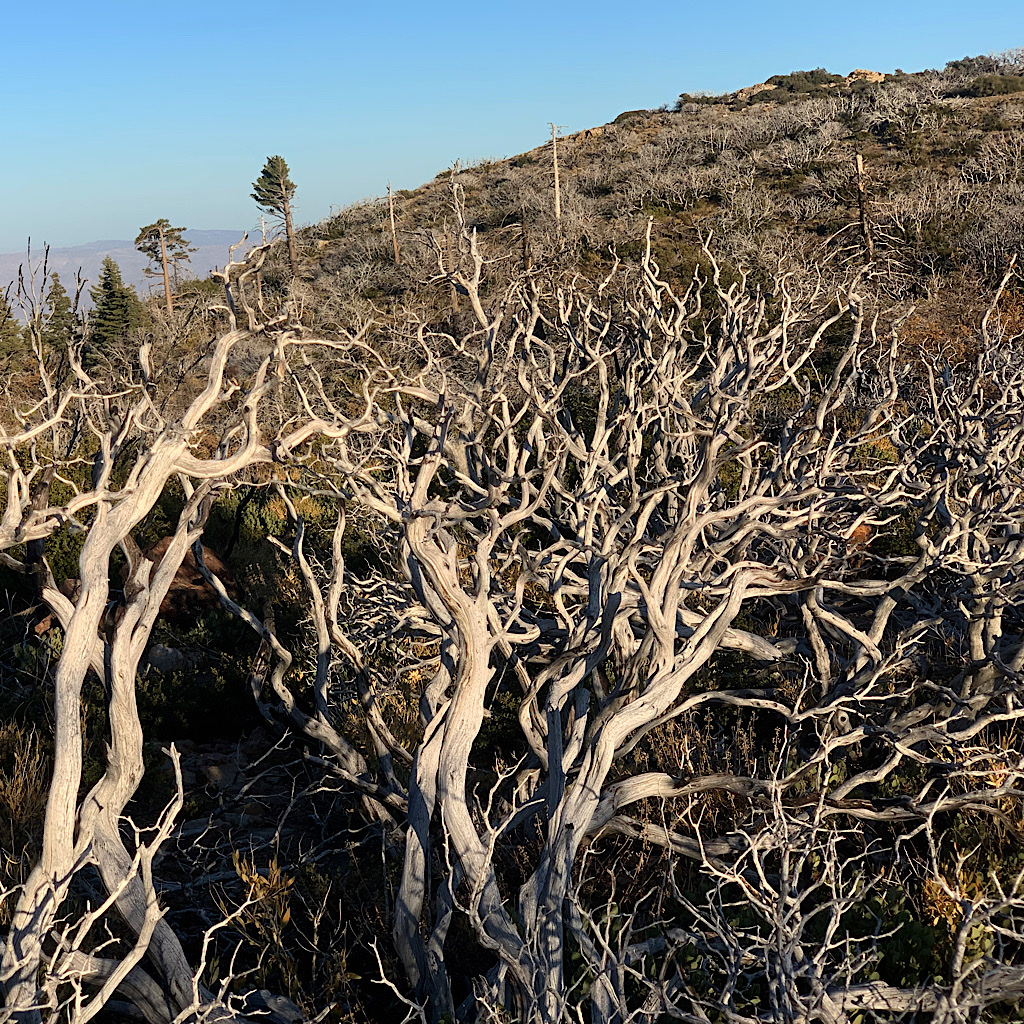
Our timing is perfect with enough light to filter water out of the piped spring pouring into a trough, set our cowgirl camp, change into warm layers, make and eat dinner, then crawl in as the waxing gibbous sends her rays through the oak branches, just now divebombing us with acorns. Isn’t backpacking grand?


4 Responses
Thank you for this detail description. Just curious what was your timeframe for the 20 miles. What time did you leave and arrive? I’m planning on doing this section the opposite direction & trying to iron out details.
Thanks for writing Sandra! We started at about 8:00 am and arrived around 4. We did not walk fast and took long breaks. Since it was fall and got pitch dark at 6, we wanted to get set up in camp well before sunset. The rock fall is easily passed if the slack line is still in place. I would check on that before attempting, otherwise you have to pass you pack over (to a partner?) and crawl under the rocks. I really loved this section (and the awesome campsite) and it was especially lovely in the cool weather. Let me know how it goes for you! ~Blissful
WOW. My heart was pounding reading about transferring around the boulders!! It is so beautiful to see see the pictures and to know you;’re there—right there in the beauty and the sky — the same sky I look at too! You are so strong and adventurous and amazing.
What an amazing world we share!! ♥️